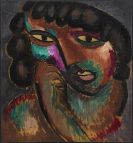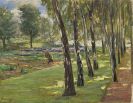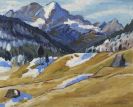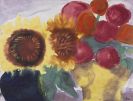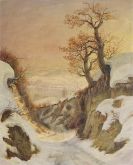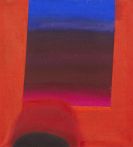
Raymond Loewy
Paris
1893 -
Monaco
1986
The designer and engineer Raymond Loewy was born in France. After completing his engineering studes at the Université de Paris and École de Laneau, Raymond Loewy emigrated to the United States of America in 1919. Raymond Loewy worked in New York as a shop window decorator for Saks Fith Avenue and Macy's and drew fahisons for "Vogue", "Harper's Bazaar", and "Vanity Fair". In 1929 Raymond Loewy opened a practice for industrial design. Among the first commissions Raymond Loewy received was to redesign the unattractive-looking casing of the Sigmund Gestetner copying machine, which made sales take off and stay high. Raymond Loewy was one of the most brilliant and ebullient designers, which was certainly also due to a lifelong gut instinct for marketing himself. For over fifty years Raymond Loewy's practice set standards in industrial design. Raymond Loewy is the pioneer of streamlined form. Using modeling clay models, Loewy design fluid, cutting-edge forms for a great many basic household goods and appliances, including refrigerators, vacuum cleaners, radios, cameras, and telephones. Raymond Loewy also designed locomotives for the Pennsylvania Railroad Company as well as vehicles such as the "Hupmobile" (1934) for the Hupp Motor Company, the Studebaker "Champion" (1947), and the iconic streamlined Grehound buses. The "Coldspot" refrigerator Raymond Loewy designed in 1934 for the mail-order firm Sears Roebuck is believed to be the first household appliance to be advertized for its good looks rather than its performance. Raymond Loewy's fundamental principle for product design was to free the outer casing from the mechanism inside and give the appliance an attractive appearance. Starting with vehicle design, where streamlined form is required to maximize speed and reduce wind resistance, Raymond Loewy proceeded to apply this design principle to all products. Raymond Loewy was also active as a design consultant who created the corporate image of numerous firms. From 1935 Raymond Loewy received several commissions for redesigning large department stores. He design new packaging for Lucky Strike cigarettes, the Coca Cola and Shell logos and the famous Coca Cola bottle is a signature Loewy design. In 1934 Loewy's practice was reproduced full-scale in the Museum of Modern Art. During the 1960s and 1970s, Raymond Loewy advised US administrations, redesigning the airplane Air Force One for John F. Kennedy. It was Raymond Loewy who inspected the interior of Skylab for NASA to evaluate the quality of life astronauts would have in it (1969-72). Ramond Loewy's philosophy of design, summed up in the acronym MAYA (most advanced, yet acceptable), was the main factor ensuring the success of so many of his designs. Published in 1951, Raymond Loewy's autobiography, "Never leave well enough alone", was an international bestseller.
Would you like to sell a work by Raymond Loewy?
Infos for seller
